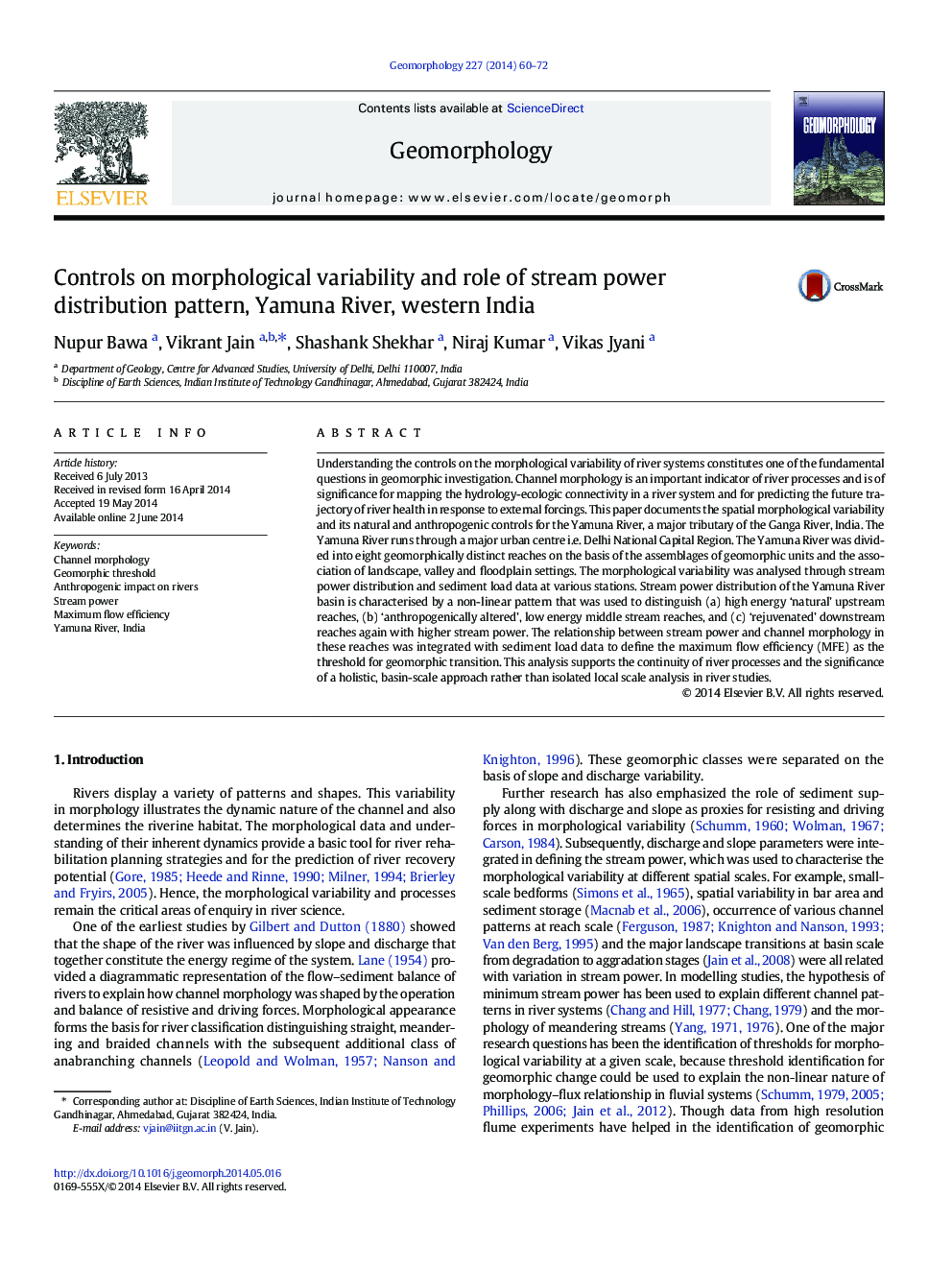| کد مقاله | کد نشریه | سال انتشار | مقاله انگلیسی | نسخه تمام متن |
|---|---|---|---|---|
| 4684405 | 1635422 | 2014 | 13 صفحه PDF | دانلود رایگان |
• Explicates morphological variability in an anthropogenically disturbed river
• Stream power distribution in the Yamuna River is characterised by non-linear pattern.
• Anthropogenic disturbances govern stream power–channel morphology relationship.
• Geomorphic threshold could be defined by integrating stream power and sediment load.
• A holistic basin scale analysis provides better understanding of geomorphic changes.
Understanding the controls on the morphological variability of river systems constitutes one of the fundamental questions in geomorphic investigation. Channel morphology is an important indicator of river processes and is of significance for mapping the hydrology-ecologic connectivity in a river system and for predicting the future trajectory of river health in response to external forcings. This paper documents the spatial morphological variability and its natural and anthropogenic controls for the Yamuna River, a major tributary of the Ganga River, India. The Yamuna River runs through a major urban centre i.e. Delhi National Capital Region. The Yamuna River was divided into eight geomorphically distinct reaches on the basis of the assemblages of geomorphic units and the association of landscape, valley and floodplain settings. The morphological variability was analysed through stream power distribution and sediment load data at various stations. Stream power distribution of the Yamuna River basin is characterised by a non-linear pattern that was used to distinguish (a) high energy ‘natural’ upstream reaches, (b) ‘anthropogenically altered’, low energy middle stream reaches, and (c) ‘rejuvenated’ downstream reaches again with higher stream power. The relationship between stream power and channel morphology in these reaches was integrated with sediment load data to define the maximum flow efficiency (MFE) as the threshold for geomorphic transition. This analysis supports the continuity of river processes and the significance of a holistic, basin-scale approach rather than isolated local scale analysis in river studies.
Journal: Geomorphology - Volume 227, 15 December 2014, Pages 60–72
